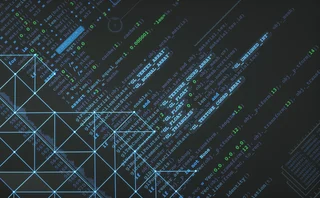Market Surveillance special report

Click here to download the PDF
Watchful Eyes
There's a popular statistic that's usually trotted out in any story about surveillance from the UK media, which claims that British citizens are caught on camera around 300 times per day. It's not hard to believe, given that this small, soggy island has over 4 million CCTV cameras in operation, by conservative estimates, at any one time-roughly one for every 16 people. If the average person feels like they're being watched, then they're not alone: Incoming regulations around market surveillance and communications recording for the financial services industry are definitely designed to make workers at banks know that everything they're doing is being monitored.
In an ideal world, this should make the job of market-surveillance analysts and compliance officers much easier. After all, with modern technology, voice records can be searched and correlated with market data around a particular trade, while complex-event processing (CEP) technology even offers the possibility of commingling unstructured data and spinning it through analytics engines to flag up causes for concern. Entire decision-making and action-reaction sequences can be reconstructed to provide a definitive look at not only how something took place during the course of the trading day, but why. As ITG's Michael Sparkes says in this report's virtual roundtable on page 4, when it comes to taking in vast quantities of data, it can sometimes feel like you can't see the wood for the trees. Knowing how to analyze data, and what you want to learn from it, is just as important as being able to do it in the first place.
This, more than anything else, is perhaps the greatest challenge for the function of market surveillance. Not only is it being forced to still perform its role in the midst of enormous changes in both market structure and practice, with the Balkanization of trading venues and the emergence of high-speed, high-frequency trading, but it also has to adapt and run with new technologies in the process. Maintaining a watchful eye across pre-trade, at-trade and post-trade cycles, in this context, becomes an enormous challenge. It's a necessary one, though, and it demands serious attention from all institutions. After all, the penalties for not monitoring trading activities to the very best of one's ability can be extreme, if the cautionary tales of the past few years are anything to go by.
Only users who have a paid subscription or are part of a corporate subscription are able to print or copy content.
To access these options, along with all other subscription benefits, please contact info@waterstechnology.com or view our subscription options here: https://subscriptions.waterstechnology.com/subscribe
You are currently unable to print this content. Please contact info@waterstechnology.com to find out more.
You are currently unable to copy this content. Please contact info@waterstechnology.com to find out more.
Copyright Infopro Digital Limited. All rights reserved.
As outlined in our terms and conditions, https://www.infopro-digital.com/terms-and-conditions/subscriptions/ (point 2.4), printing is limited to a single copy.
If you would like to purchase additional rights please email info@waterstechnology.com
Copyright Infopro Digital Limited. All rights reserved.
You may share this content using our article tools. As outlined in our terms and conditions, https://www.infopro-digital.com/terms-and-conditions/subscriptions/ (clause 2.4), an Authorised User may only make one copy of the materials for their own personal use. You must also comply with the restrictions in clause 2.5.
If you would like to purchase additional rights please email info@waterstechnology.com
More on Trading Tech
The total portfolio approach gains momentum: Building the right tech foundation for success
The rationale for the TPA, and the crucial role technology plays in enabling such an approach
Google, CME say they’ve proved cloud can support HFT—now what?
After demonstrating in September that ultra-low-latency trading can be facilitated in the cloud, the exchange and tech giant are hoping to see barriers to entry come down, particularly as overnight trading looms.
Institutional priorities in multi-asset investing
Private markets, broader exposures and the race for integration
BlackRock and AccessFintech partner, LSEG collabs with OpenAI, Apex launches Pisces service, and more
The Waters Cooler: CJC launches MDC service, Centreon secures Sixth Street investment, UK bond CT update, and more in this week’s news roundup.
TCB Data-Broadhead pairing highlights challenges of market data management
Waters Wrap: The vendors are hoping that blending TCB’s reporting infrastructure with Broadhead’s DLT-backed digital contract and auditing engine will be the cure for data rights management.
Robeco tests credit tool built in Bloomberg’s Python platform
This follows the asset manager’s participation in Bloomberg’s Code Crunch hackathon in Singapore, alongside other firms including LGT Investment Bank and university students.
FCA eyes equities tape, OpenAI and Capco team up, prediction markets gain steam, and more
The Waters Cooler: More tokenization, Ediphy lawsuit updates, Rimes teams up with Databricks, and more in this week’s news roundup.
Buy-side data heads push being on ‘right side’ of GenAI
Data heads at Man Group and Systematica Investments explain how GenAI has transformed the quant research process.







